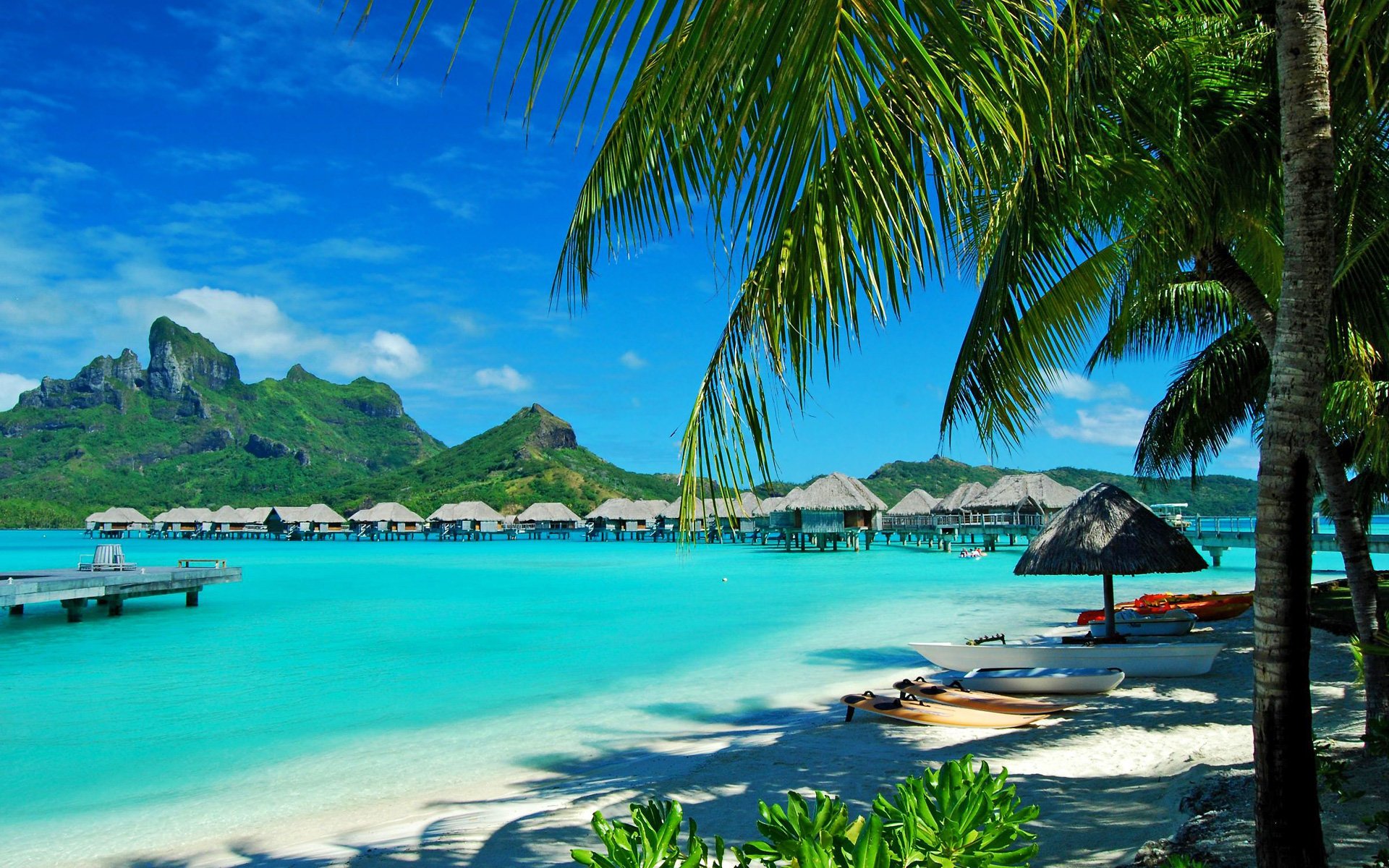The Hawaiian Islands: moving from an underwater spot to a unique corner of the world
The Hawaiian Islands are one of the most fascinating and unique geographical formations on our planet. Located in the Pacific Ocean, they attract attention with their beauty, diversity of nature and rich cultural heritage. At first glance, it seems that these islands have emerged recently, under the influence of volcanic activity. However, their history goes back millions of years.
The Hawaiian archipelago consists of eight main islands, each with its own unique character and natural attractions. The islands are based on volcanic mountains, tall and beautiful, created by underwater volcanic activity. Their formation began millions of years ago when lava from deep within the earth erupted to the surface and created new land areas.

The importance of the Hawaiian Islands to science cannot be overemphasized. Their unique geologic origin attracts the attention of scientists from all over the world. Hawaii is an excellent object for studying the processes of island formation and volcanic activity. In addition, the islands are home to many rare species of plants and animals that attract the attention of biologists and ecologists.
But it is not only science that finds in the Hawaiian islands a source of inspiration. They also have tremendous cultural significance. For Hawaii’s indigenous Kanaka people, the islands are a sacred place filled with legends and myths. The rich heritage of local customs and traditions is passed down from generation to generation and attracts tourists from all over the world.
Thus, the Hawaiian Islands are an amazing combination of natural beauty and historical heritage that continues to amaze and inspire people.
Geologic processes and formation

The Hawaiian Islands are the result of a long geologic process involving volcanic activity and tectonic plate movement in the Pacific Ocean. The formation of these islands began approximately 5 million years ago and continues to the present day.
The primary geologic mechanism underlying the formation of the Hawaiian Islands is related to a hot spot, or mantle spot, located beneath the Pacific Ocean. This is where magma from the earth’s mantle bursts through the crust, forming island volcanoes. Over time, the islands move further eastward as the Pacific plate moves northwestward.
One of the most famous volcanoes in Hawaii is Mauna Kea, which is also the tallest mountain on earth when measured from its base on the ocean floor. The Hawaiian Islands were formed at depths of about 4,000 meters from the surface of the water and cover a total area of about 16,000 square kilometers, which is roughly the size of Switzerland (15,940 square kilometers).
It is important to note that the Hawaiian Islands not only possess volcanic landforms, but also have a variety of geologic formations such as valleys, ridges, and waterfalls. This makes them not only interesting sites for scientific research, but also attractive for tourism and nature study.
Formative stages

The Hawaiian Islands are the result of a long geologic process in which each of them went through several stages of formation, each of which had a different impact on their current appearance. Let’s take a look at each of the islands and their stages of formation:
- Hawaii (Big Island) – “Hawaii” means “land of the gods” in the Hawaiian language. This island was formed by the activity of volcanoes such as Mauna Loa and Kilauea. It is the youngest of the Hawaiian islands, having originated approximately 1 million years ago. The most distinctive feature of this island is its volcanic landscapes, including active volcanoes and lava flows.
- Maui – The name “” translates to “big fish.” This island was formed by volcanoes and erosion processes starting about 1.3 million years ago. Maui is famous for its gorgeous beaches, volcanic ridges and amazing natural arches such as the famous Goliath’s Stove.
- Oahu – “Oahu” means “place with orderly gardens.” The island was formed about 3 million years ago by volcanic activity. Oahu is known for its beautiful beaches, including the famous Waikiki Beach, as well as historical sites, including Pearl Harbor.
- Kauai – The name “Kauai” translates to “covered in sand.” This island was formed about 5 million years ago and is characterized by its beautiful green hills, waterfalls, and amazing canyons such as Waimea.
- Molokai – The name “Molokai” means “high cliffs.” This island, which originated about 1.5 million years ago, is known for its mountain ranges, canyons and sandy beaches. It is also famous for its historical sites, including the colony for persecuted criminals at Kalaupapa.
- Lanai – “Lanai” translates to “rising high.” The island was formed about 1.3 million years ago and is known for its luxury resorts, as well as its secluded beaches and abundance of exotic nature.
- Kahoolawe – The name “Kahoolawe” means “first rampart.” This island, which originated about 1 million years ago, is one of the most sparsely populated and under-explored. It is known for its beautiful beaches and nature preserves.
- Ni’ihau – “Ni’ihau” translates to “paradise island.” This island, formed about 4 million years ago, is the westernmost of the Hawaiian islands and is known for its cultural and natural isolation.
Geographic location

The Hawaiian Islands are located in the Pacific Ocean, west of the continental shores of North America. The geographic coordinates of the islands lie roughly between 19° and 22° north latitude and between 155° and 160° west longitude.
Hawaii is located roughly in the middle of the Pacific Ocean, its remoteness from land makes it isolated from other parts of the world. Hawaii’s closest neighbors are the islands and atolls of the Polynesian region, such as Fiji, Tonga, and the Marquesas Islands. They also belong to Southeast Asia and the Australia-Oceanic region.
Original settlement

The original settlement of the Hawaiian Islands occurred millennia ago by migratory waves as the first Polynesian peoples crossed the Pacific Ocean in their two-hundred-pound canoes. One of the earliest milestones in this history was the arrival of Polynesian seafarers in Hawaii, as evidenced by archaeological finds dating from around the 12th through 13th centuries CE. The migration waves brought with them not only the people, but also their culture, language, religion, and customs.
Archaeological research indicates that the first inhabitants of Hawaii came to the islands from other parts of the Polynesian archipelago such as Fiji, Tonga, and Samoa. They used their seafaring skills and knowledge of the stars, winds, and tides to reach Hawaii’s remote islands. The original settlers brought plants, animals, and tools with them to provide food and materials for building.
Finds from archaeological excavations include canoe remains, tools, pottery, stone tools, and household items that help scientists reconstruct the history of Hawaii’s first inhabitants. These finds also indicate that Hawaii’s first settlers were well adapted to their new environment and quickly settled on the islands, utilizing local resources for their survival.
The initial settlement of Hawaii represents an important milestone in the history of not only this archipelago, but of the entire Pacific region. This event had a significant impact on the development of Hawaii’s culture, society, and economy, as well as on its place in the overall context of Polynesian culture and history.
Cultural and historical influences

Hawaii’s geographic location has played a crucial role in shaping its culture and society. The islands’ isolation in the Pacific Ocean has led to the development of a unique culture that combines elements of Polynesian, Asian, and European traditions.
Geography has also shaped the lifestyles and economic activities of the people of Hawaii. Fishing, agriculture, and commerce were the main industries that sustained the population. Seafaring played a key role in the exchange of goods and cultural ties between the islands and neighboring regions.
Historical events have also had a significant impact on Hawaii’s destiny. During the 18th and 19th centuries, Hawaii faced colonization by Europeans, particularly the British and Americans. This led to the integration of the islands into the world economy, but also caused major changes in culture and society. The adoption of Christianity, the introduction of Western educational systems, and the exploitation of natural resources had a direct impact on the traditional lifestyle and cultural heritage of Hawaiians.
An important moment in Hawaiian history was the declaration of Hawaii as the Kingdom of Hawaii in 1810. This period was characterized by increasing political stability, trade, and cultural flourishing. However, in the late nineteenth century, Hawaii faced interference from the United States, which led to the annexation of the islands in 1898. This period marked the beginning of Hawaii’s loss of independence and the process of assimilation of the Hawaiian population into American culture.
Overall, the influence of geographic location and historical events on the development of Hawaii’s culture and society is significant and continues to influence its current state.
Conclusion
In conclusion, the Hawaiian Islands are a unique geographic entity formed by long geologic processes. Their significance extends not only to the field of geology, but also to anthropology and history.
The formation processes of the islands, from their volcanic origins to contemporary changes in culture and society, make Hawaii an object of study for scholars and researchers. The islands’ geographic location in the Pacific Ocean has shaped their unique culture and society, and historical events such as colonization and annexation have contributed to Hawaii’s modern appearance.
It is important to note that the Hawaiian Islands are of great importance not only to science, but also to world culture. Their natural beauty and rich cultural heritage attract many tourists and nature lovers.
We are glad that our muving company can act as a pwashimartner on moving to this amazing land for our reader. Working with such a partner can make the move easier and more comfortable and carefree.
In summary, the Hawaiian Islands continue to be a source of wonder and inspiration to all who travel to their shores or explore them from afar. Their significance in the context of geology, anthropology, and history is undeniable, and their preservation should be a priority for all of us.
Contact us in any way:
Telephone: (954) 773-9667
E-mail: abs@absoluteinc.org





